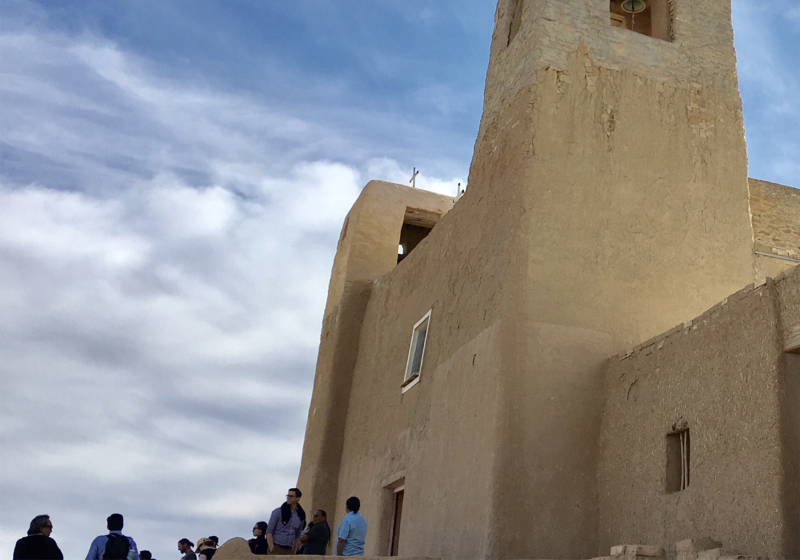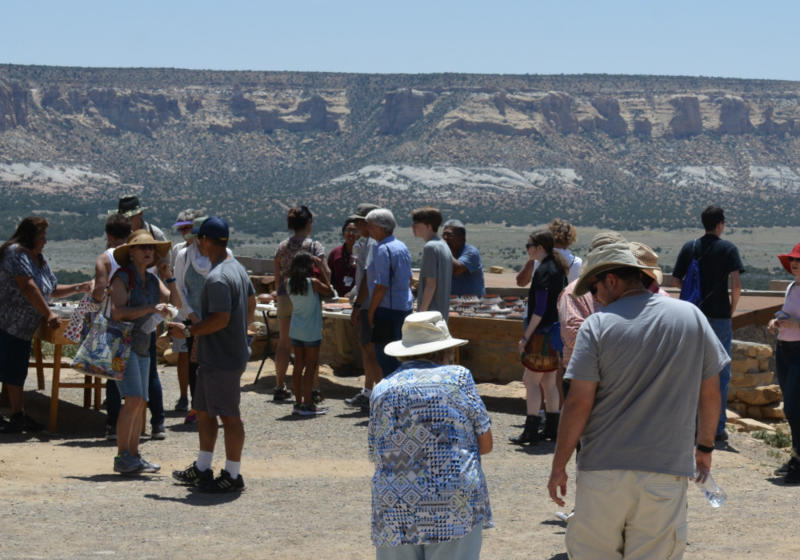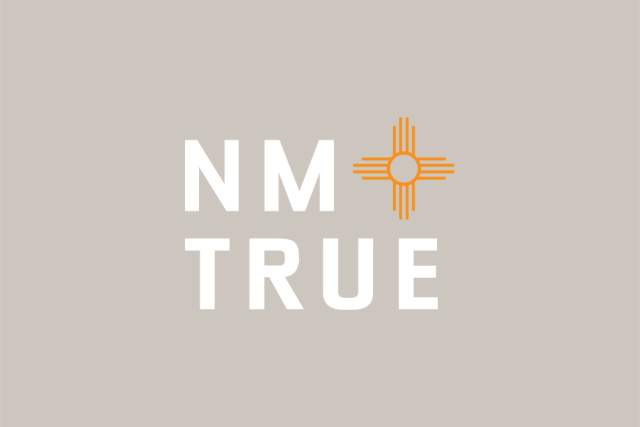Acoma Pueblo welcomes visitors with a willingness to share its history, food, art, and thriving culture.
The best way to understand the vitality of the centuries-old Acoma Pueblo culture may just be to meet the residents of Sky City. “My people share their experiences of living on top of the mesa, and often share their kindness by offering food or a friendly hello,” says tour ambassador Brandon “Turtle” Valdo. “This makes coming to Sky City special, because we try to make people feel comfortable and like they belong.”
Reopening one of the oldest continuously inhabited settlements in North America after more than three years of pandemic-related closure is important for the gregarious guide. “My favorite part is sharing the history, because I’m part of that ancestry,” says Valdo. “I want everyone to understand that all Native tribes and pueblos aren’t the same.”
About an hour’s drive west of Albuquerque, the ancestral site called Sky City dates back to AD 1100, with more than 300 structures made of adobe and sandstone perched atop a 360-foot mesa. About 50 Acoma people, mostly elders, call Sky City home year-round, living in residences passed down by families through matrilineal lines. Many others return for feast days and special ceremonies that honor ancestors, saints, and harvests in February, September, and December. Receiving a personal invitation to attend an event, some of which welcome the public, is a singular honor.

A National Trust for Historic Preservation historic site, Sky City also features the San Estevan del Rey Mission Church, founded by Spanish friars in 1629 and is itself a National Historic Landmark. One of the oldest churches in the country, the mission-style church was constructed by Acoma ancestors, who hauled the timber beams from the San Mateo Mountains 30 miles away and carried soil for the historic cemetery up from the valley floor by hand.
Sitting in the beautiful high-desert landscape of the Acoma Valley, the 40,000-square-foot Sky City Cultural Center and Haak’u Museum act as a gateway to the pueblo. The 90-minute guided tours begin there, with participants encouraged to take in the museum’s displays showcasing how the pueblo is sustaining its long history, lifeways, and art forms like pottery, jewelry, sculpture, painting, and clothing.

The traditional Acoma pottery on display features delicate black geometric designs representing rain, mountains, flowers, and other natural elements. Made of clay found on the pueblo, the pottery’s thin, hand-coiled walls ring with bell-like tones. Rotating exhibitions of contemporary works reveal how today’s artisans interpret centuries-old techniques and motifs with modern flair, including in items such as clay storytellers and other decorative figurines that embrace a broader palette of pottery colors to include reds, oranges, and browns. The Gaits’i Gift Shop offers pottery as well as cards and books, clothing and accessories, artworks, jewelry, and more as mementos of time spent in this vibrant place.
Before or after a tour, enjoy a meal at the Yaak’a Cafe to sample a menu of traditional dishes and new takes on them. Yaak’a, which translates to “corn” in Keres, the language of Acoma, has been farmed for centuries and forms the centerpiece of many dishes. Stews of pork and green or red chile and freshly made fry bread—often topped with beans, beef, and chile—demonstrate how delicious these staples can be.

To cap the guided exploration of Sky City, visitors can climb down the hand-carved sandstone staircase for a stark example of what it meant to live there. Before modern times and the construction of a road, the steep, 300-step path provided the only access to the summit for people, animals, food, and water.
Valdo, whose great-grandmother gave him the nickname Turtle because of his slowness in chopping wood, believes the tours provide a deeper appreciation for Acoma’s living history. “About 10 percent of guests show up and are skeptical—they wonder what the big deal is,” he says. “When they hear the history and see the beauty and the houses and talk with people, their minds are changed. It’s exciting to see someone walk away happy, having learned something, and feeling honored to have been invited to engage with my culture.”

